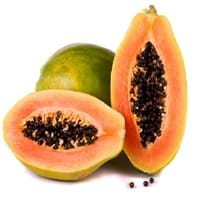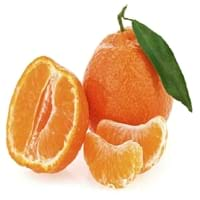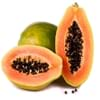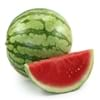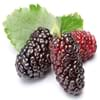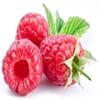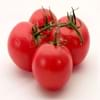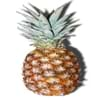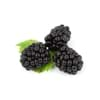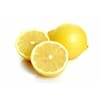Health Benefits
Arthritis prevention, Asthma treatment, Cancer prevention, Heart care, Prevents macular degeneration, Prevents rheumatoid
Cancer prevention, Heart care, Increases metabolic rate, Reduces stress
General Benefits
Anti-inflammatory properties, Boosts immune system, Digestive aid, Healing of wounds, Maintains healthy cholesterol level, Strengthens bones
Boosts immune system, Controls blood pressure, Digestive aid, Eye care, Helps in weight loss
Skin Benefits
Anti-aging benefits, Hydrates skin, Skin revitalization, Treatment of acne, Treatment of dark spots
Brightens and lightens complexion, Treatment of acne, Treatment of dark spots
Hair Benefits
Good conditioner, Promotes longer and healthier hair, Softening mask, Treatment of dandruff
Promotes longer and healthier hair, Protects hair
Allergy Symptoms
Abdominal pains, Carotenemia on excessive consumtion, Latex Allergy
Abdominal pains, Breathing difficulty, Coughing, Diarrhea, Drop in blood pressure, Fainting, Runny nose, Skin rash, Sneezing, Swelling of mouth, tongue or lips, Vomiting
Side Effects
Allergic reaction, Skin problems, Possibly unsafe during pregnancy
Allergic reaction
Best Time to Eat
As a snack in the late afternoon, Don't consume at night and before bed, Don't eat after meal
As a snack in the late afternoon, Don't consume at night and before bed, Eat the fresh ones, avoid mixing with any other foods, don't eat after meal., Morning time (before lunch)
Vitamin A (Retinol)
Not Available
Vitamin B5 (Pantothenic Acid)
Vitamin C (Ascorbic Acid)
Vitamin K (Phyllochinone)
Lutein+Zeaxanthin
Not Available
Calories in Fresh Fruit with Peel
Not Available
Not Available
Calories in Fresh Fruit without Peel
Calories in Frozen Form
Not Available
Calories in Dried Form
Not Available
Calories in Canned Form
Not Available
Type
Melon, Tree fruit
Citrus
Season
All seasons
Autumn
Varieties
Coorg Honey Dew, Pusa Dwarf, Pusa Giant, Pusa Majesty, Pusa Delicious, Pusa Dwarf, Solo, Ranchi, Taiwan-785 and Taiwan-786
Clemenules or Nules and Nadorcott
Color
Orange, Yellow
Orange
Inside Color
Orange
Orange
Taste
Luscious, Sweet
Sweet, Tangy, Tart
Origin
Mexico, Central America
China
Soil Type
Rocky, Sandy, Well-drained
Loam, Sandy, Well-drained
Climatic Conditions
Warm, Without frosts
Warm to hot climate
Facts about
- Papaya seeds show contraceptive effects in male monkeys.
- Their seeds are used as a replacement for black pepper in some nations due to peppery taste.
- Papaya is known by funny names like paw paw or papaw and the mamao.
- Clementine was first grown at the citrus research center in USA in 1909.
- It is called as"Christmas orange" as it's limited growing season falls during winter.
- It's a hybrid between Mediterranean and Oranges.
Other Countries
Brazil, Indonesia, Mexico, Nigeria
Argentina, Brazil, Egypt, Italy, Japan, Morocco, Turkey, United States of America
Top Importer
United States of America
United States of America
Top Exporter
Mexico
Spain
Botanical Name
Carica papaya
Citrus clementina
Synonym
Not Available
Not Available
Subkingdom
Tracheobionta
Tracheobionta
Division
Magnoliophyta
Magnoliophyta
Class
Magnoliopsida
Magnoliopsida
Subclass
Dillenhidae
Rosidae
Order
Brassicales
Sapindales
Family
Caricaceae
Rutaceae
Species
C. papaya
C. clementina
Generic Group
Papaya
Citrus fruit
Difference Between Papaya and Clementine
We might think that Papaya and Clementine are similar with respect to nutritional value and health benefits. But the nutrient content of both fruits is different. Papaya and Clementine Facts such as their taste, shape, color, and size are also distinct. The difference between Papaya and Clementine is explained here.
The amount of calories in 100 gm of fresh Papaya and Clementine with peel is Not Available and Not Available and the amount of calories without peel is 43.00 kcal and 47.00 kcal respectively. Thus, Papaya and Clementine belong to Low Calorie Fruits and Low Calorie Fruits category.These fruits might or might not differ with respect to their scientific classification. The order of Papaya and Clementine is Brassicales and Sapindales respectively. Papaya belongs to Caricaceae family and Clementine belongs to Rutaceae family. Papaya belongs to Carica genus of C. papaya species and Clementine belongs to Citrus genus of C. clementina species. Beings plants, both fruits belong to Plantae Kingdom.
